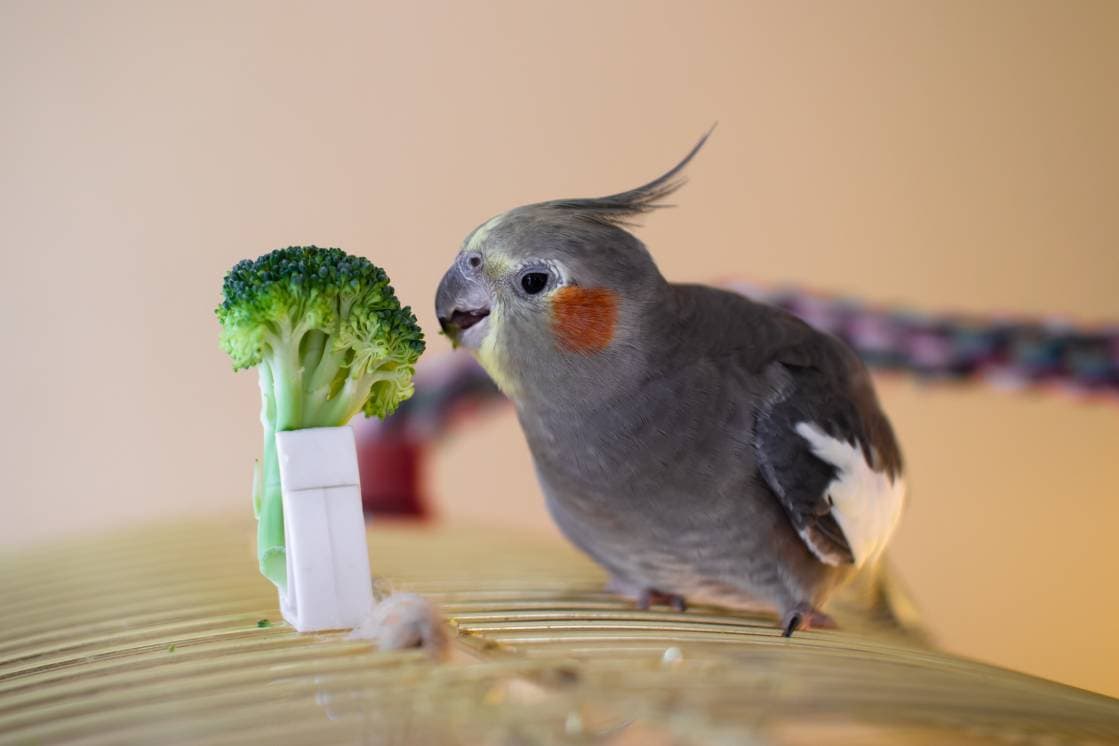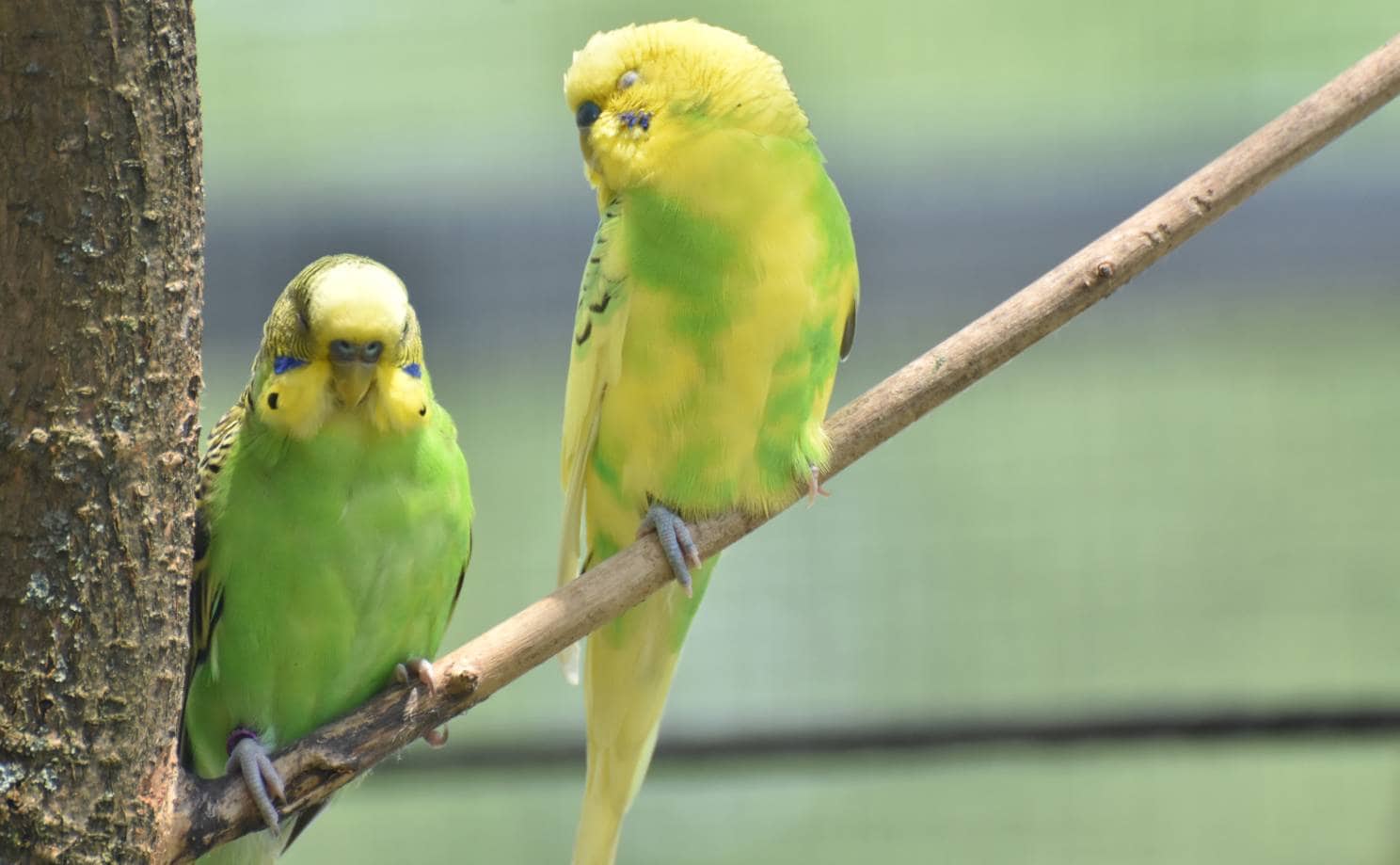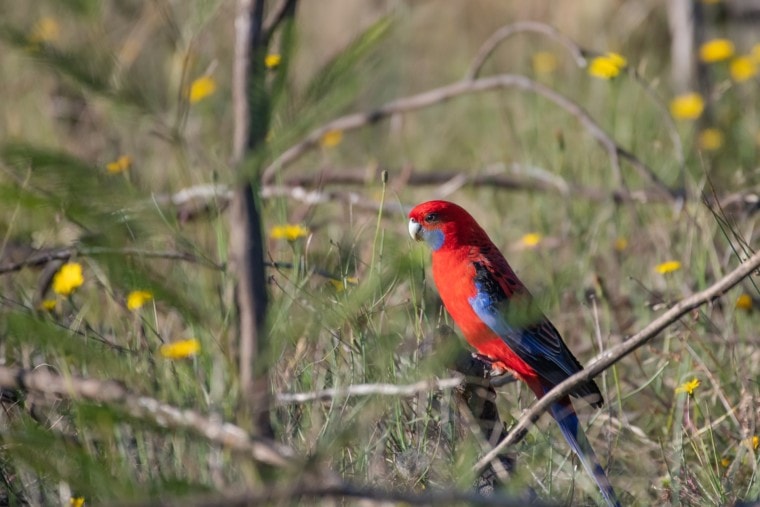
The Crimson Rosella is a unique parrot species on several scores. Its colors are eye-catching, making it a bird you’ll certainly notice the first time you see it. It lives primarily in eastern Australia, although it has made its way to New Zealand and Norfolk. The International Union for Conservation of Nature and Natural Resources (IUCN) classifies it as a species of least concern but decreasing in the wild.1
The Crimson Rosella subsumed two other genetically related species, the Adelaide Rosella and Yellow Rosella. Essentially, that means it has absorbed the two to make a single one. It has seven subspecies that differ in size and color.
 Species Overview
Species Overview
| Common Names: | Crimson Rosella, Adelaide Rosella, Yellow Rosella, Pennant’s Parakeet, Red Lowry |
| Scientific Name: | Platycercus elegans |
| Adult Size: | 14” L |
| Life Expectancy: | Up to 30 years |
Origin and History
The Crimson Rosella lives in isolated pockets of Australia primarily, which probably accounts for the subspecies variations. Scientists have documented its existence since the late 18th century when it received its official name. Its preferred habitats are forested areas, shrublands, and even parks. Its beautiful plumage and sweet temperament made it a popular pet bird.
Enthusiasts collect and sell this species in the local and national pet trade. It has a lot going for it that contributes to its popularity. They have a voracious appetite, which sometimes puts them in conflict with farmers. Its genus name means flat-tailed, which is an apt description of these colorful birds.
Temperament
The Crimson Rosella responds well to handling, as long as you’re consistent with it. Treats are an excellent motivator. They are smart parrots, which is the proverbial double-edged sword. That means they can learn the routine of your household and pick up new tricks. They are also ornery sometimes and might bite unprovoked. You should always supervise out-of-the-cage playtime, too.
While the Crimson Rosella is docile, it’s not a cuddler. The birds will tolerate handling, but we suggest that you stay alert when with this pet. It’s not that this bird is mean. It just has a mischievous side to it that sometimes shows itself in unexpected ways.
Speech & Vocalizations
The Crimson Rosella isn’t the talker like some species, such as the Mynah or African Grey Parrot. They are less interested in repeating words. This bird would rather sing and whistle its own tune, although it may pick up on what you have to offer to its repertoire. Nevertheless, the Crimson Rosella makes its presence known, which can pose an issue for apartment dwellers.
Crimson Rosella Colors and Markings
Its name says it all. The Crimson Rosella is a colorful bird worthy of its native habitat. Male and female birds are similar, without definitive sexual dimorphism other than a size difference between the sexes. The males are bulkier than the females, with some different patterns that distinguish the two. Of course, it also varies with the subspecies. Some of the most common variations include:
 Caring for the Crimson Rosella
Caring for the Crimson Rosella
The Crimson Rosella isn’t a beginner species or one well-suited to younger pet owners. It requires a time commitment to get it through its disagreeable teenage years when it’s more inclined to bite. This species is more appropriate for experienced individuals who understand that birds will be birds sometimes.
The Crimson Rosella does best in the largest cage you can get. After all, its wingspan is 17–21” W. It’s an active bird, although not a migratory species. This pet loves to chew things, which makes it essential to supervise playtime because of its feline-like curiosity. This species is monogamous and will do best with a mate.
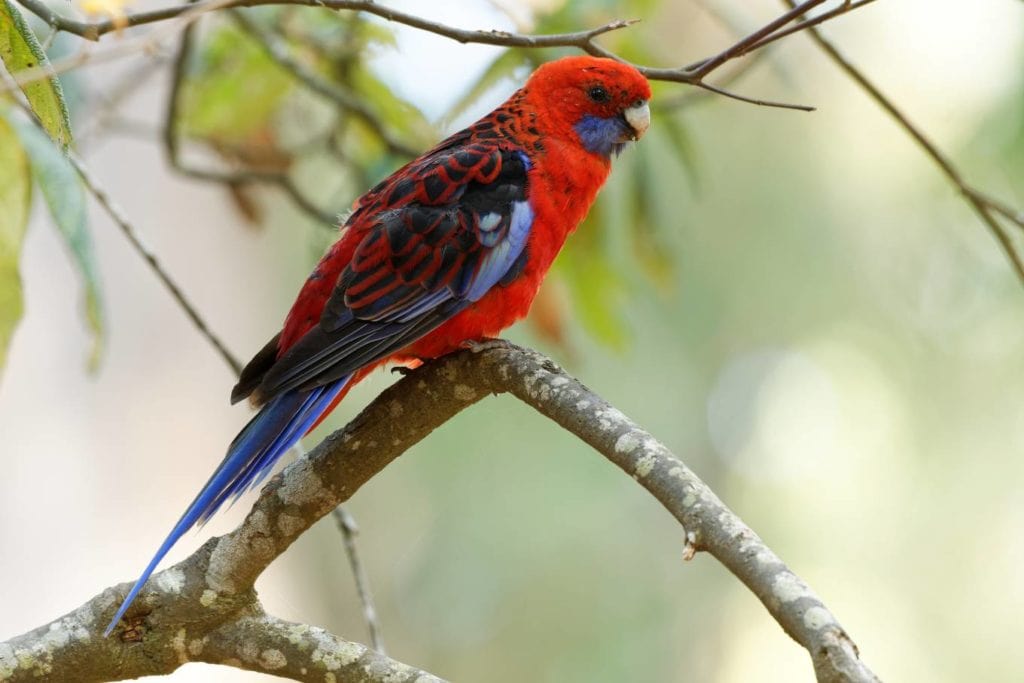
Common Health Problems
Some of the Crimson Rosella’s health problems stem from its diet, which we’ll discuss in detail next. Some foodstuffs can create a ripe breeding ground for bacteria and mold. Therefore, proper food storage is imperative to keep these birds healthy. Unfortunately, this species is also susceptible to psittacosis, a zoonotic disease. That means you can get it, too. Luckily, it is also rare.
Diet and Nutrition
The Crimson Rosella is a generalist in the wild. It feeds on a variety of foodstuffs, from insects to fruits to seeds. Pet owners should provide the same variety in a captive setting since that’s what the species has evolved to expect. A well-rounded diet means that your pet will get the nutrition it needs to stay healthy, both physically and mentally.
Exercise
The Crimson Rosella takes life at its own pace. It’s not a flighty bird, but it does need its space and enough things to occupy its time. The latter will ensure that this pet has enough mental stimulation to prevent boredom. Birds will often pluck their feathers, leaving them vulnerable to secondary bacterial infections if they don’t have enough to do.
Since the Crimson Rosella is an intelligent species, it’s also essential to mix things up, whether you give it new toys, swapped-out distractions, or find other ways to amuse them. Of course, interaction with you is the best way to keep this bird happy and healthy.
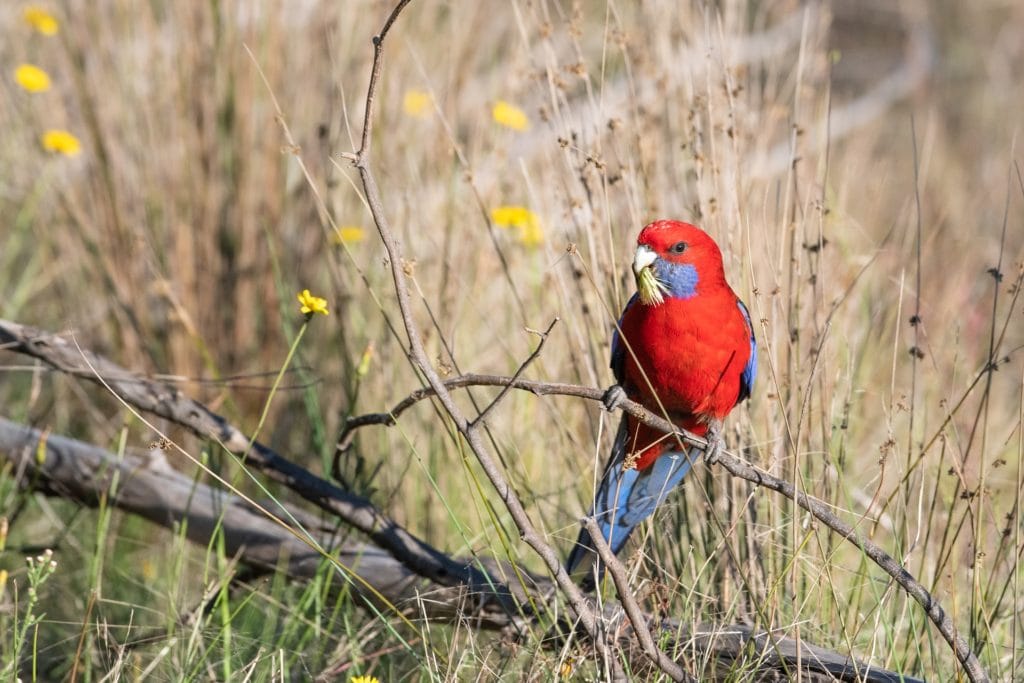
Where to Adopt or Buy a Crimson Rosella
You might find a Crimson Rosella at your local pet store or in a big-box retailer. They are also available online. Thanks to their docile nature and popularity, the price you’ll pay will likely be reasonable at less than $500, depending on the variation. You might also pay more for a pet that has been handled a lot as a youngster since it’ll make a better companion.
Conclusion
The Crimson Rosella is a gorgeous bird that has a lot going for it. It’s a happy, docile species that will always keep you on your toes, especially if you let it out to explore its world. While it has a naughty side, the Crimson Rosella is also sweet if you take the time to socialize it properly as a juvenile. It’s not a beginner pet, but it will reward you for the effort you take to make it content in its home.
Featured Image Credit: pen_ash, Pixabay

 Species Overview
Species Overview Caring for the Crimson Rosella
Caring for the Crimson Rosella

